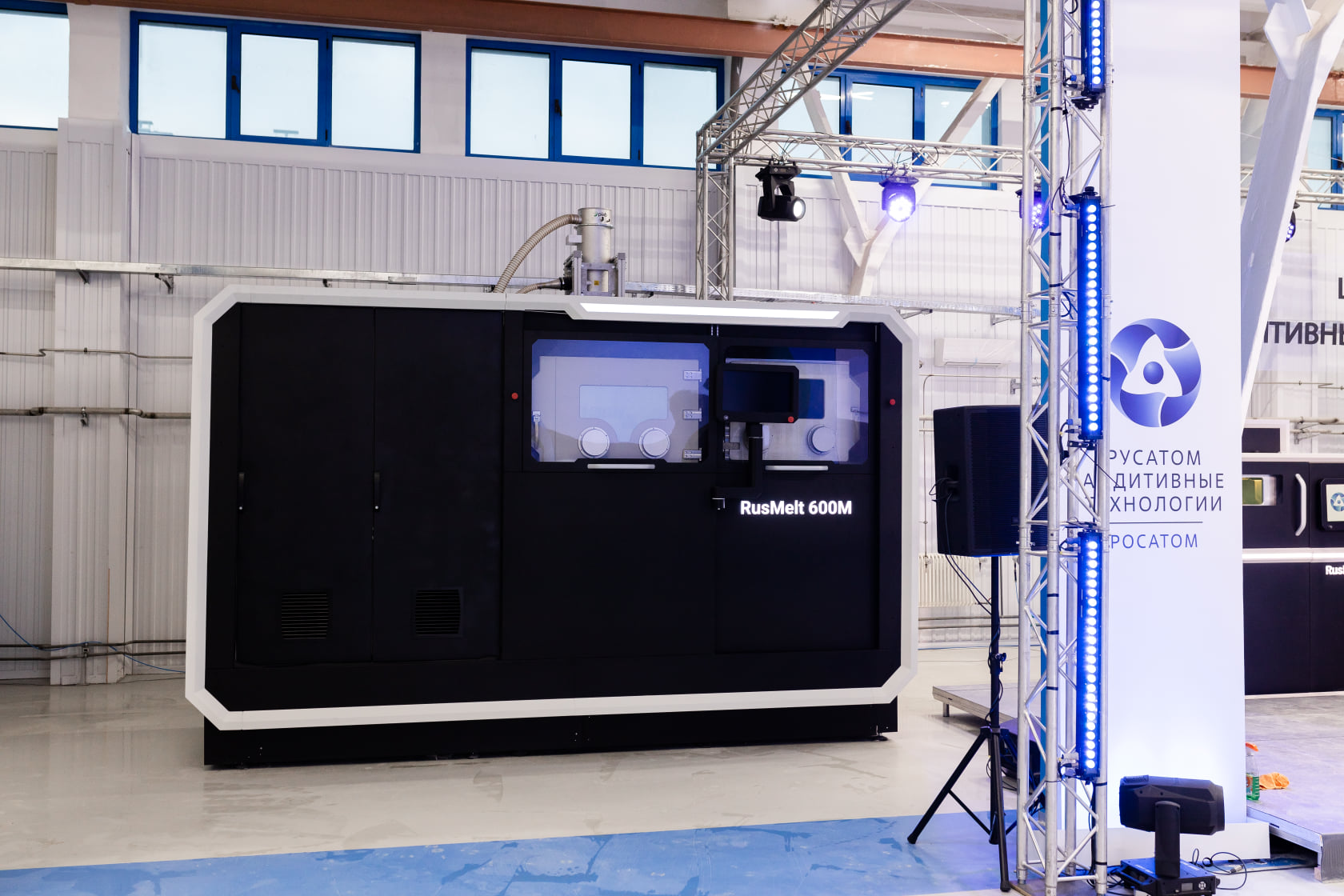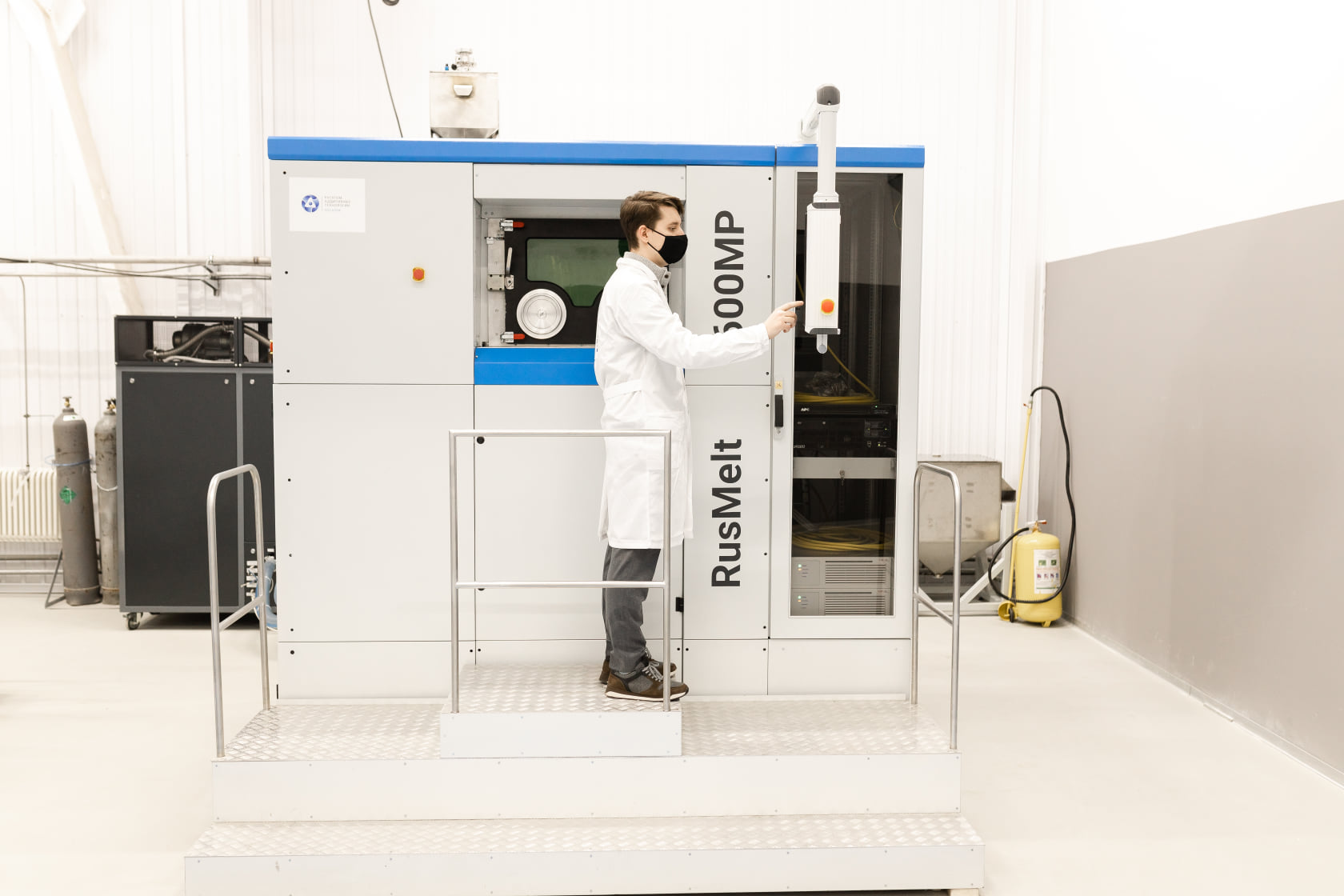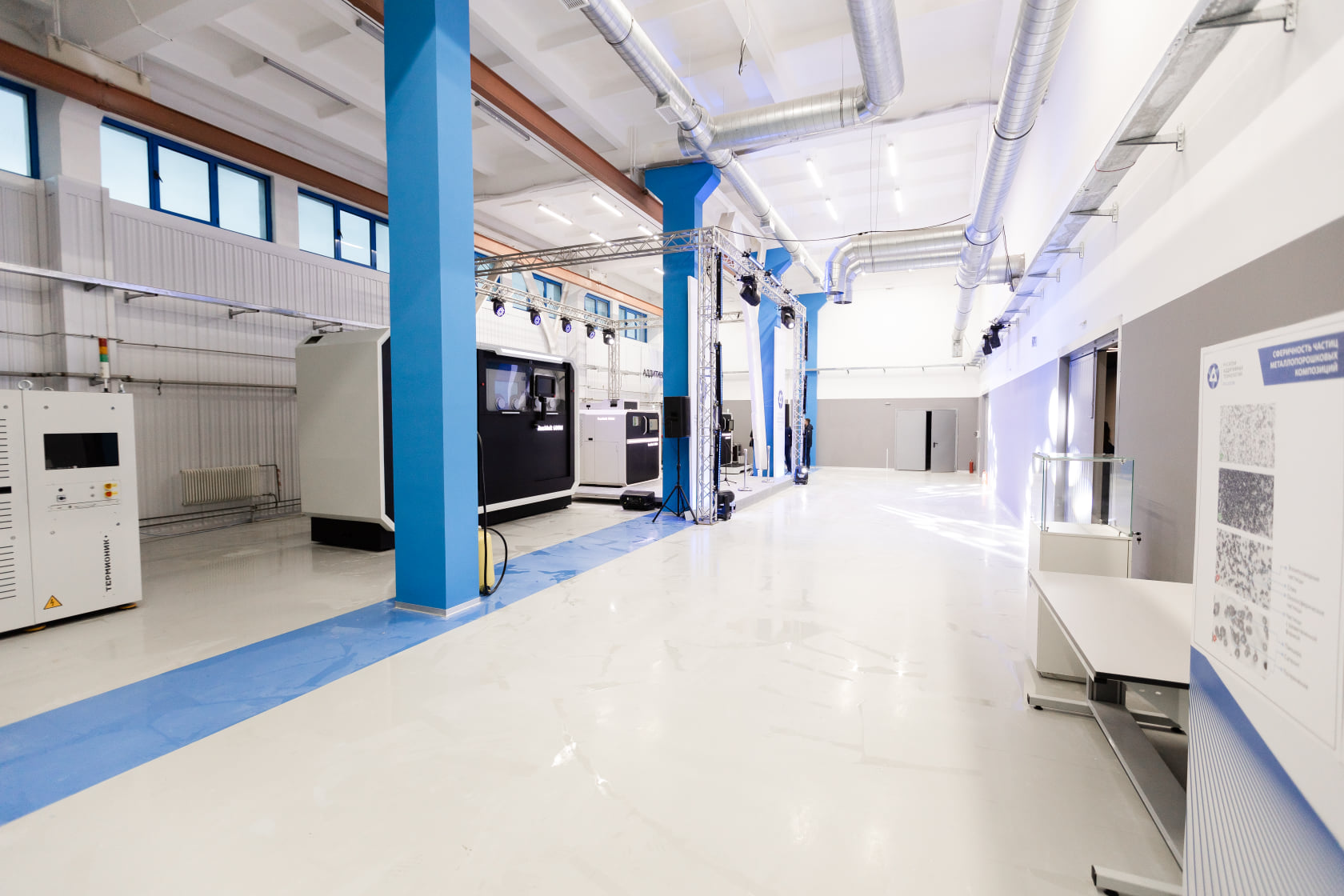Rusatom Additive Technologies (RusAT), a subsidiary of Russian nuclear technology state corporation Rosatom, launched its first Additive Technologies Center (ATC) in Moscow. The one-of-a-kind facility in Russia will be operating domestic equipment and focus on testing additive manufacturing (AM) technologies as well as demonstrating their capabilities for industrial enterprises. The center is equipped with Rosatom’s selective laser melting (SLM) 3D printing systems, the RusMelt 300M, RusMelt 600M, and RusMelt 600 RM for metal powder printing. The 3D printing equipment was manufactured at NPO Centrotech, an enterprise of the Rosatom Fuel Company TVEL, while the machines have been completely assembled at RusAT in Moscow.
All of these printers have parameters and characteristics that meet international standards and run on Russian updated software suites that allow working both in automatic mode without additional settings (depending on the default metal powder used) and selecting fusion parameters manually when using new materials. Also, the Rusmelt 600M printer has a 600×600 mm construction area, which allows printing products with unique dimensions for applied SLM technology, which is widely being used in different industries, like aerospace, automotive, consumer goods, and healthcare.

Rusatom-Additive Technologies (RusAT)’s RusMelt 600M 3D printer at the first Additive Technologies Center (ATC) in Moscow. Image courtesy of RusAT
Rosatom’s ATC center is the first model of a facility fusing development, engineering, and manufacturing in the country. The combination of shop-floors for 3D printer assembling, printing, post-processing, as well as a laboratory for product research and sample testing make it unique in the region. RusAT engineers will be able to check new designs and technological solutions immediately after equipment launches and make adjustments to the designs on-site and much faster.
“Opening of the first Additive Technologies Center underlines the role of Rosatom in creating a new technological paradigm in our country. This is an extraordinary milestone not just for the nuclear industry, but on a national scale as well,” said Alexey Likhachev, Director General of Rosatom. “There is a lot of work ahead to create a whole network of such centers, primarily in the cities and regions of Rosatom enterprises operation. The next such center will be established in Novouralsk on the basis of NPO Centrotech, another enterprise of TVEL Fuel Company. The development and application of these technologies have a great meaning for the entire nuclear industry. We have solutions for using additive manufacturing, from separate elements of some products to essential supplies of equipment.”

Rusatom-Additive Technologies (RusAT)’s engineer using the RusMelt 600MP at the first Additive Technologies Center (ATC) in Moscow. Image courtesy of RusAT
This first ATC is a pilot platform, suggested the Director General of RusAT, Mikhail Turundaev, where company engineers will develop the best technological proposals and business solutions for clients. The center even features a fully 3D printed anti-debris filter for a nuclear fuel assembly, which is usually quite difficult to manufacture using existing methods, while 3D printing offers the possibility to obtain unique designs, and it required fewer materials than traditional manufacturing. By the end of 2021, the plan is to launch a full production cycle for AM products.
As for the second stage of the ATC facility, RusAT suggested that it will house complex machines for 3D printing with metal powders and photopolymers relying on SLS and stereolithography (SLA) technologies. Additionally, the range of testing and the auxiliary equipment will also be expanded. As for financial indicators, Turundaev suggested that after the launch of the second stage, the planned revenue could exceed RUB 300 million (roughly 4 million dollars) by 2030.

Rusatom-Additive Technologies (RusAT) opened its first Additive Technologies Center (ATC) in Moscow. Image courtesy of RusAT
However, there has been a shadow of complication surrounding the launch of the new ATC complex. According to ROSATOM’s announcement on December 23, 2020, the ATC is located at the site of the Moscow Polymetal Plant. The controversial location used to be home to a former Soviet-era facility that extracted thorium and uranium from ore for nuclear reactors and dumped radioactive waste until the 1960s. In early 2020, international media outlets, like Germany’s news channel Deutsche Welle (DW), reported that experts have suggested the site – which remains in a populated Southwestern district of Moscow close to the Moskva River and popular Kolomenskoye park – still contains tons of radioactive waste. With activists from the local Greenpeace branch having taken a serious interest, claiming that area testing has shown radiation above the permissible norm.
Nonetheless, ROSATOM has moved ahead with its plans to launch its first ATC facility as part of RusAT’s business target. The special-purpose subsidiary has focused on four key areas since its foundation in February 2018, from manufacturing 3D printers and their components to producing materials and metal powders. The Russian-made printers are 20% cheaper than the foreign models and have a better performance, claimed RusAT at the time. Still, the ultimate goal of the company is to introduce additive manufacturing technologies to industrial enterprises, everything from nuclear and space technologies to medicine – a field where there is a particularly high demand for 3D printed implants from local healthcare institutions.
Subscribe to Our Email Newsletter
Stay up-to-date on all the latest news from the 3D printing industry and receive information and offers from third party vendors.
Print Services
Upload your 3D Models and get them printed quickly and efficiently.
You May Also Like
Reinventing Reindustrialization: Why NAVWAR Project Manager Spencer Koroly Invented a Made-in-America 3D Printer
It has become virtually impossible to regularly follow additive manufacturing (AM) industry news and not stumble across the term “defense industrial base” (DIB), a concept encompassing all the many diverse...
Inside The Barnes Global Advisors’ Vision for a Stronger AM Ecosystem
As additive manufacturing (AM) continues to revolutionize the industrial landscape, Pittsburgh-based consultancy The Barnes Global Advisors (TBGA) is helping shape what that future looks like. As the largest independent AM...
Ruggedized: How USMC Innovation Officer Matt Pine Navigates 3D Printing in the Military
Disclaimer: Matt Pine’s views are not the views of the Department of Defense nor the U.S. Marine Corps Throughout this decade thus far, the military’s adoption of additive manufacturing (AM)...
U.S. Congress Calls Out 3D Printing in Proposal for Commercial Reserve Manufacturing Network
Last week, the U.S. House of Representatives’ Appropriations Committee moved the FY 2026 defense bill forward to the House floor. Included in the legislation is a $131 million proposal for...

































